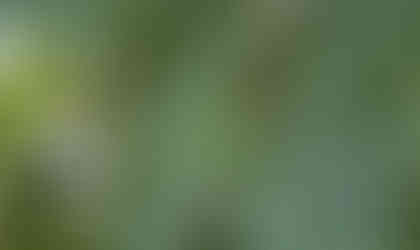Holoptelea integrifolia(Ulmaceae) Chirbilva
- Das K

- Nov 11
- 4 min read
Holoptelea integrifolia (Indian Elm)
1. Scientific name and Basic Taxonomic classification
Species: Holoptelea integrifolia
Family: Ulmaceae
Genus: Holoptelea
Related Herbs from the same family:
Ulmus rubra (Slippery Elm): A renowned demulcent herb in Western herbalism, the inner bark is used to soothe the throat, stomach, and intestines. It is used for coughs, diarrhea, and gastritis.
Celtis australis (European Nettle Tree): Used in traditional medicine for its astringent properties and for treating amenorrhea and menorrhagia.
Trema orientalis (Charcoal Tree): Used in various folk medicines for treating coughs, sore throats, and as a diuretic.
The Ulmaceae, or elm family, consists of trees and shrubs, many of which have bark with mucilaginous and demulcent properties, making them valuable for soothing internal and external irritations.
2. Common names
Scientific Name: Holoptelea integrifolia | English: Indian Elm, Jungle Cork Tree | Sanskrit: Chirbilva, Putigandha | Hindi: Chilbil, Papri | Tamil: Aya | Telugu: Tapasi | Kannada: Thavasī | Malayalam: Aaval | Marathi: Vavali | Bengali: - | Gujarati: Kanjo |
3. Medicinal Uses:Anti-inflammatory, Anti-arthritic, Antioxidant, Antimicrobial, Blood Purifier, Anti-diabetic, Laxative, Astringent.
Medicinal Parts:The bark is the most commonly used part, followed by the leaves and seeds.
4. Phytochemicals specific to the plant and their action.
Friedelin and Epifriedelinol: Triterpenoid compounds. Their primary actions are Anti-inflammatory and Anti-arthritic, making them key for joint disorders.
Beta-Sitosterol: A phytosterol. Its actions are Anti-inflammatory and Hypolipidemic (cholesterol-lowering).
Tannins: Astringent compounds found in the bark. Their actions are Astringent, Antimicrobial, and Wound Healing.
Alkaloids (Holoptelin-A): Specific alkaloids isolated from the plant have shown Antimicrobial and Antioxidant activities.
Flavonoids: Contribute to the Antioxidant and Anti-inflammatory effects, protecting the body from oxidative stress.
5. Traditional and Ethnobotanical uses covering the Medicinal uses.
Amavata (Rheumatoid Arthritis) & Sandhivata (Osteoarthritis)
Formulation: Bark decoction or paste.
Preparation & Use: A decoction of the bark is consumed internally. Alternatively, a paste made from the bark is applied externally over inflamed and painful joints.
Reasoning: The potent anti-inflammatory and analgesic compounds, such as friedelin, help reduce inflammation and pain in the joints, balancing Vata dosha.
Kushta (Skin Diseases) & Vrana (Wounds)
Formulation: Bark paste or medicated oil.
Preparation & Use: The bark is powdered and made into a paste with water or oil and applied on chronic skin diseases like eczema, ringworm, and wounds.
Reasoning: Its antimicrobial, anti-inflammatory, and blood-purifying (Raktashodhaka) properties help clear toxins from the blood and heal skin infections.
Prameha (Diabetes)
Formulation: Bark decoction.
Preparation & Use: A decoction of the bark is taken regularly on an empty stomach to help manage blood sugar levels.
Reasoning: The bark has demonstrated hypoglycemic properties in studies, which may help improve insulin sensitivity or reduce blood glucose.
Grahani (IBS) & Vibandha (Constipation)
Formulation: Bark powder.
Preparation & Use: A small amount of the bark powder is taken with warm water. In low doses, it acts as an astringent for diarrhea; in higher doses, it can have a laxative effect.
Reasoning: It helps regulate bowel movements due to its dual astringent and mild laxative properties, likely balancing Vata in the colon.
6. Healing recipes, Teas, Decoctions and Culinary use (if any):
This is a medicinal tree, not typically used in cooking.
Anti-arthritic Bark Decoction
Purpose: To reduce inflammation in arthritis and gout.
Preparation & Use:
Take one teaspoon of dried Holoptelea bark.
Boil in two cups of water until it reduces to one cup.
Strain and drink once a day. (Consult a practitioner for dosage).
Skin Healing Paste
Purpose: To treat fungal infections, eczema, and wounds.
Preparation & Use:
Make a fine powder of the dried bark.
Mix with coconut oil or water to form a thick paste.
Apply to the affected area and leave for 30 minutes before washing.
Blood Purifying Infusion
Purpose: Used in traditional practice for skin diseases arising from blood impurities.
Preparation & Use:
Soak a small piece of the bark in a glass of water overnight.
Strain and drink the water in the morning on an empty stomach.
7. Disclaimer:Holoptelea integrifolia is a potent medicinal plant. Its internal use should be supervised by a qualified practitioner as the dosage is critical—it can be astringent or laxative based on the dose. Some studies suggest high doses may be hepatotoxic. It is not recommended for self-medication, especially during pregnancy and lactation. This information is for academic purposes only.
---- End of the blog -x-x
8. Reference Books, Books for In-depth Study:
Indian Medicinal Plants by K.R. Kirtikar and B.D. Basu
Ayurvedic Pharmacopoeia of India
Indian Materia Medica by Dr. K.M. Nadkarni
9. Further study: Plants that might interest you due to similar medicinal properties
1. Ulmus rubra (Slippery Elm)* Species: Ulmus rubra | Family: Ulmaceae | Genus: Ulmus* Similarities: Both are trees from the Elm family whose bark is used medicinally. While Slippery Elm is a premier demulcent, Holoptelea shares anti-inflammatory and skin-healing properties. They both have a traditional use for soothing internal and external inflammations.
2. Boswellia serrata (Shallaki/Frankincense)* Species: Boswellia serrata | Family: Burseraceae | Genus: Boswellia* Similarities: Both Holoptelea and Shallaki are highly specific and potent for treating inflammatory joint disorders like arthritis. They are both considered Vata-balancing and are used internally and externally for pain and swelling.
-x-x-x-End-x-x-x-



















Comments